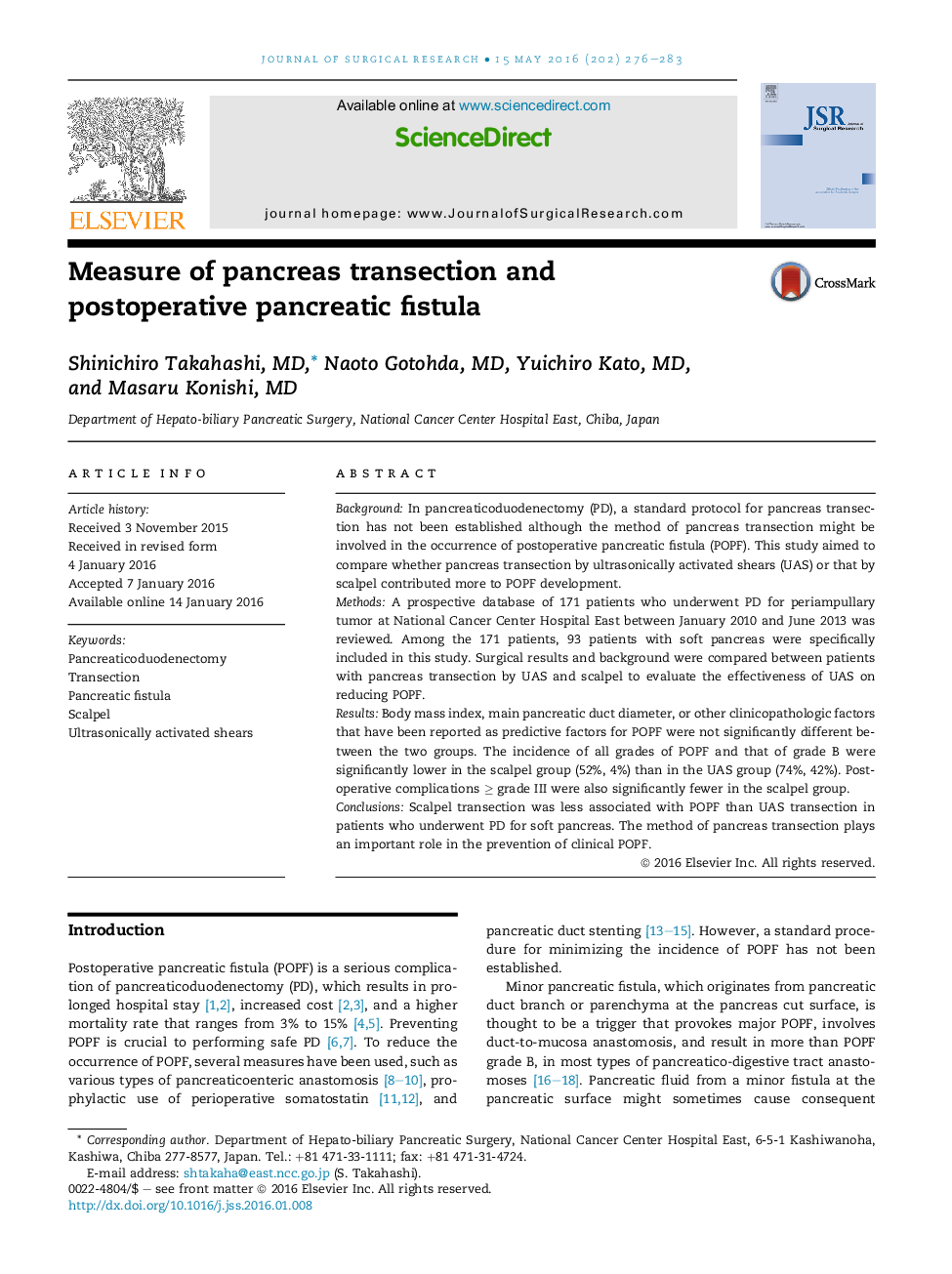| Article ID | Journal | Published Year | Pages | File Type |
|---|---|---|---|---|
| 4299224 | Journal of Surgical Research | 2016 | 8 Pages |
BackgroundIn pancreaticoduodenectomy (PD), a standard protocol for pancreas transection has not been established although the method of pancreas transection might be involved in the occurrence of postoperative pancreatic fistula (POPF). This study aimed to compare whether pancreas transection by ultrasonically activated shears (UAS) or that by scalpel contributed more to POPF development.MethodsA prospective database of 171 patients who underwent PD for periampullary tumor at National Cancer Center Hospital East between January 2010 and June 2013 was reviewed. Among the 171 patients, 93 patients with soft pancreas were specifically included in this study. Surgical results and background were compared between patients with pancreas transection by UAS and scalpel to evaluate the effectiveness of UAS on reducing POPF.ResultsBody mass index, main pancreatic duct diameter, or other clinicopathologic factors that have been reported as predictive factors for POPF were not significantly different between the two groups. The incidence of all grades of POPF and that of grade B were significantly lower in the scalpel group (52%, 4%) than in the UAS group (74%, 42%). Postoperative complications ≥ grade III were also significantly fewer in the scalpel group.ConclusionsScalpel transection was less associated with POPF than UAS transection in patients who underwent PD for soft pancreas. The method of pancreas transection plays an important role in the prevention of clinical POPF.
